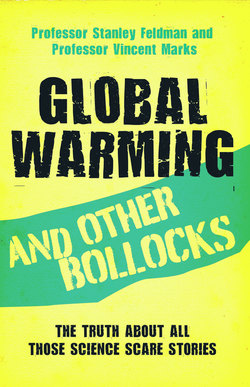Читать книгу Global Warming and Other Bollocks - Stanley Feldman - Страница 20
На сайте Литреса книга снята с продажи.
Global-warming predictions
ОглавлениеIt is largely due to the gaps in our knowledge and the indirect nature of the information about events in the remote past that people have interpreted the same information in different ways. There is no doubt that some have seen political and personal advantage in filling in these gaps with the most absurd, scary guesses and projections; others have minimised their importance or ignored the potential problem; while some have used the information selectively in order to advance a preconceived hypothesis. The information has been misinterpreted and wildly exaggerated by some in order to make political points. Some pressure groups justify this as being necessary to alert the public to the perceived dangers of global warming. They echo St Paul, who in his letter to the Corinthians appeared to license such scare tactics when he wrote, ‘If the trumpet give an uncertain sound who shall prepare himself for battle?’ Indeed, Sir John Houghton, the first chairman of the International Panel on Climate Change (IPCC), is reported to have said, ‘Unless we announce disasters no one will listen to us.’
There is no doubt that the evangelical nature and the scary exaggerations of many who claim the environmental banner – and their insistence that ‘all reputable scientists agree with them’ when, clearly, many do not (the Oregon petition had more than 33,000 signatures of scientists disagreeing with the theory of manmade global warming, more than 9,000 of whom have PhDs) – has done a grave disservice to science and made many question the basis of all the work linking anthropogenic CO2 to global warming.
The most alarming suggestion of the doomsday environmentalists, that the oceans are rising at an alarming rate, has been proved wrong. Islands that were due to be submerged, according to their forecasts, are actually seeing the seas receding. Their prophecies have been shown to be wrong by information from orbiting satellites. Over the past eight or nine years the measurements from ERS1 and ERS2 (European remote sensing satellites) have demonstrated that there has been a rise in sea level of 0.5–0.1mm a year (within the margin of scientific error) and that the increase is not accelerating! Although there is some evidence that the levels of the oceans have risen slowly, possibly by about 5cm over the past 150 years, it is a process that started long before industrialisation produced an increase in atmospheric CO2. So confident are the owners of property in the Maldives that the sea is actually receding that lavish seafront hotels are being built, yet the prophets of doom assure us that they will soon be under water. The island of Tuvalu in the Pacific, which was predicted to become submerged, has actually seen the sea level fall (it may be that the island is rising). The acceleration in the rate at which some glaciers in Greenland have been melting, adding to the ocean mass, started long before the motor car and industrialisation.
Not every drought or flood, hurricane or volcanic eruption, change in the climate or in the population of an animal species is due to global warming. There have been many such occurrences in the past and there is no evidence that their incidence is increasing (see Figure 3.5). Although the Arctic ice cap has probably been getting smaller since the Little Ice Age, most evidence points to an increase in the amount of ice in the Antarctic ice.
Figure 3.5: Number of hurricanes on the east coast of America over the past 150 years (National Weather Statistics)
